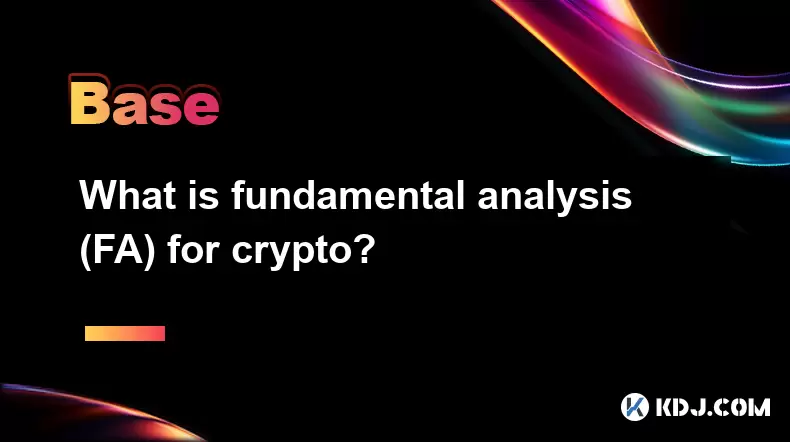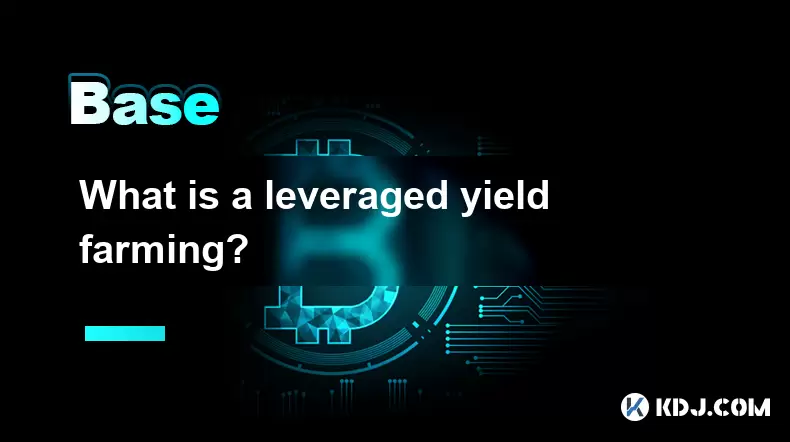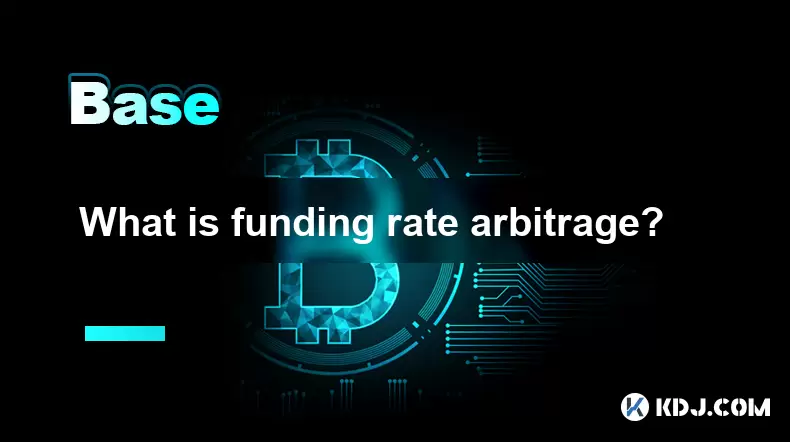-
 Bitcoin
Bitcoin $108,463.3266
-1.47% -
 Ethereum
Ethereum $2,535.8576
-3.62% -
 Tether USDt
Tether USDt $1.0006
0.02% -
 XRP
XRP $2.2352
-2.24% -
 BNB
BNB $658.1049
-0.63% -
 Solana
Solana $149.9207
-2.53% -
 USDC
USDC $0.9998
-0.07% -
 TRON
TRON $0.2857
0.45% -
 Dogecoin
Dogecoin $0.1659
-4.24% -
 Cardano
Cardano $0.5784
-3.85% -
 Hyperliquid
Hyperliquid $38.4944
-4.70% -
 Sui
Sui $2.9107
-4.19% -
 Bitcoin Cash
Bitcoin Cash $485.3637
-3.32% -
 Chainlink
Chainlink $13.3074
-4.18% -
 UNUS SED LEO
UNUS SED LEO $9.0499
0.41% -
 Avalanche
Avalanche $18.0347
-3.98% -
 Stellar
Stellar $0.2394
-2.23% -
 Toncoin
Toncoin $2.8110
-2.68% -
 Shiba Inu
Shiba Inu $0.0...01155
-3.23% -
 Litecoin
Litecoin $87.7967
-3.87% -
 Hedera
Hedera $0.1555
-2.87% -
 Monero
Monero $317.3839
-1.79% -
 Polkadot
Polkadot $3.4144
-4.90% -
 Dai
Dai $1.0000
-0.02% -
 Ethena USDe
Ethena USDe $1.0003
0.00% -
 Bitget Token
Bitget Token $4.4734
-2.29% -
 Uniswap
Uniswap $7.2556
-6.53% -
 Pepe
Pepe $0.0...09693
-7.27% -
 Aave
Aave $267.0924
-4.81% -
 Pi
Pi $0.4834
-3.31%
What is fundamental analysis (FA) for crypto?
Fundamental analysis in crypto evaluates a project's intrinsic value through factors like team, technology, tokenomics, and real-world adoption.
Jul 04, 2025 at 05:35 pm

Understanding the Basics of Fundamental Analysis in Cryptocurrency
Fundamental analysis (FA) is a method used by investors to evaluate the intrinsic value of an asset based on underlying economic, financial, and qualitative factors. In the context of cryptocurrency, FA involves analyzing various aspects of a blockchain project to determine its long-term potential and whether its current market price reflects its true value.
Unlike technical analysis (TA), which focuses on historical price movements and chart patterns, FA looks deeper into the actual utility, team, adoption, technology, and overall ecosystem of a crypto project. This approach helps investors make informed decisions beyond short-term volatility.
Key Components of Fundamental Analysis for Crypto Assets
To conduct a thorough fundamental analysis, one must consider multiple facets of a cryptocurrency or blockchain project:
- Project Purpose and Use Case: Is there a clear problem being solved? Does the token have a real-world application?
- Team and Advisors: Who are the developers and founders behind the project? Are they experienced and transparent about their backgrounds?
- Whitepaper Quality: A well-written whitepaper should outline the project's goals, technology, roadmap, and tokenomics clearly.
- Tokenomics: How many tokens exist? What is the distribution model? Is there inflation or deflationary mechanisms in place?
- Technology and Innovation: Does the project introduce novel technology or improve upon existing solutions?
Each of these elements contributes to the overall viability and sustainability of a project, making them crucial for any serious investor conducting FA.
Evaluating On-Chain Metrics as Part of Fundamental Analysis
Beyond qualitative data, on-chain metrics offer quantitative insights that support fundamental analysis. These include:
- Active Addresses: An increasing number of active wallet addresses may indicate growing user engagement.
- Transaction Volume: Rising transaction volume can signal increased usage of the network.
- Holders Distribution: A decentralized holder base often suggests healthier network security and reduced risk of manipulation.
- Supply Velocity: Measures how quickly coins move through the economy, offering clues about spending behavior versus holding tendencies.
These metrics help analysts understand how a network is being used in practice, rather than just theoretical promises outlined in whitepapers.
Community Engagement and Adoption Indicators
A strong and engaged community is often a sign of a healthy project. Investors should assess:
- Social Media Presence: Active discussions on platforms like Twitter, Reddit, and Telegram can reflect community sentiment.
- Developer Activity: Regular code updates on repositories like GitHub show ongoing development and commitment.
- Partnerships and Integrations: Collaborations with established companies or other blockchains can boost credibility and utility.
- Real-World Adoption: Is the project being used in practical applications? Are merchants accepting the token? Are enterprises building on top of it?
High levels of community interaction and real-world use are positive indicators when performing FA.
Financial Health and Funding Structure of Projects
The financial backing and funding mechanisms of a project also play a major role in fundamental analysis:
- Funding Sources: Was the project crowdfunded, venture-backed, or self-funded? Each has different implications for decentralization and independence.
- Treasury Management: Transparent treasury funds with clear allocation strategies suggest responsible governance.
- Burn Mechanisms and Buybacks: Some projects burn tokens periodically to reduce supply, potentially increasing scarcity and value.
- Revenue Models: Does the project generate income? If so, how sustainable is the revenue stream?
By evaluating these financial dynamics, investors can better gauge the longevity and operational health of a crypto project.
Frequently Asked Questions (FAQs)
Q: Can fundamental analysis be used alone to make investment decisions in crypto?
A: While FA provides deep insights into a project’s potential, it’s often combined with technical analysis (TA) and sentiment analysis for a more holistic view of the market.
Q: Is fundamental analysis applicable to all types of cryptocurrencies?
A: Yes, but the criteria may vary. For example, evaluating a DeFi token would focus on yield mechanisms and liquidity, while assessing a layer-1 blockchain might emphasize scalability and consensus protocols.
Q: How does tokenomics impact fundamental analysis?
A: Tokenomics directly influence supply-demand dynamics. A poorly designed token model can lead to inflation or centralization, negatively affecting the project's long-term value.
Q: Why do some investors ignore fundamental analysis in crypto markets?
A: Due to the highly speculative nature of crypto markets, many traders rely on short-term trends and social sentiment. However, FA remains critical for long-term investment strategies.
Disclaimer:info@kdj.com
The information provided is not trading advice. kdj.com does not assume any responsibility for any investments made based on the information provided in this article. Cryptocurrencies are highly volatile and it is highly recommended that you invest with caution after thorough research!
If you believe that the content used on this website infringes your copyright, please contact us immediately (info@kdj.com) and we will delete it promptly.
- Bitcoin's Pattern Break: Are HODLers the Key to the Next Surge?
- 2025-07-04 18:50:12
- Bitcoin Price, Trump's Bill, and the $150K Dream: A NYC Take
- 2025-07-04 19:50:12
- Ethereum, LILPEPE, and the July Bounce: Will Pepe Steal ETH's Thunder?
- 2025-07-04 19:10:12
- Binance Institutional Loans: Unlocking 4x Leverage and Zero Interest for Whales
- 2025-07-04 19:15:12
- Bitcoin Bull Run: Analysts Eye Peak in Late 2025?
- 2025-07-04 19:20:13
- Pepe Indicators, Bullish Forecast: Can the Meme Coin Rally?
- 2025-07-04 19:25:12
Related knowledge

What is a user-generated content (UGC) NFT platform?
Jul 04,2025 at 01:49pm
Understanding the Concept of a UGC NFT PlatformA user-generated content (UGC) NFT platform is a digital marketplace or ecosystem where users can create, mint, and trade non-fungible tokens (NFTs) that represent ownership of original digital content they produce. Unlike traditional NFT platforms where creators often include professional artists or develo...

What is a token generation event (TGE)?
Jul 04,2025 at 07:14am
Understanding the Basics of a Token Generation Event (TGE)A Token Generation Event (TGE) refers to the process through which a blockchain project creates and distributes its native tokens to investors, participants, or stakeholders. This event is often associated with new cryptocurrency projects launching on platforms like Ethereum, Binance Smart Chain,...

What is a block explorer API?
Jul 04,2025 at 05:07am
Understanding the Role of a Block Explorer APIA block explorer API is a crucial interface that enables developers and users to interact programmatically with blockchain data. Unlike traditional APIs used in web services, a block explorer API specifically provides access to blockchain-related information such as transaction details, wallet balances, bloc...

What is a leveraged yield farming?
Jul 04,2025 at 09:36am
Understanding Leveraged Yield FarmingLeveraged yield farming is a more advanced form of yield farming, which itself is a popular method in the decentralized finance (DeFi) ecosystem to earn returns by providing liquidity to various protocols. In traditional yield farming, users deposit tokens into a DeFi platform and earn rewards in return, often in the...

What is open interest in derivatives?
Jul 03,2025 at 02:49pm
Understanding Open Interest in DerivativesOpen interest is a critical metric used in the cryptocurrency derivatives market, particularly when analyzing futures and options contracts. It represents the total number of outstanding contracts that have not been settled or closed by either party involved. Unlike trading volume, which counts all trades made i...

What is funding rate arbitrage?
Jul 04,2025 at 11:43am
Understanding Funding Rate Arbitrage in the Cryptocurrency MarketFunding rate arbitrage is a trading strategy employed by crypto traders to exploit differences in funding rates across various perpetual futures exchanges. In perpetual contracts, funding rates are periodic payments made between long and short traders depending on whether the price of the ...

What is a user-generated content (UGC) NFT platform?
Jul 04,2025 at 01:49pm
Understanding the Concept of a UGC NFT PlatformA user-generated content (UGC) NFT platform is a digital marketplace or ecosystem where users can create, mint, and trade non-fungible tokens (NFTs) that represent ownership of original digital content they produce. Unlike traditional NFT platforms where creators often include professional artists or develo...

What is a token generation event (TGE)?
Jul 04,2025 at 07:14am
Understanding the Basics of a Token Generation Event (TGE)A Token Generation Event (TGE) refers to the process through which a blockchain project creates and distributes its native tokens to investors, participants, or stakeholders. This event is often associated with new cryptocurrency projects launching on platforms like Ethereum, Binance Smart Chain,...

What is a block explorer API?
Jul 04,2025 at 05:07am
Understanding the Role of a Block Explorer APIA block explorer API is a crucial interface that enables developers and users to interact programmatically with blockchain data. Unlike traditional APIs used in web services, a block explorer API specifically provides access to blockchain-related information such as transaction details, wallet balances, bloc...

What is a leveraged yield farming?
Jul 04,2025 at 09:36am
Understanding Leveraged Yield FarmingLeveraged yield farming is a more advanced form of yield farming, which itself is a popular method in the decentralized finance (DeFi) ecosystem to earn returns by providing liquidity to various protocols. In traditional yield farming, users deposit tokens into a DeFi platform and earn rewards in return, often in the...

What is open interest in derivatives?
Jul 03,2025 at 02:49pm
Understanding Open Interest in DerivativesOpen interest is a critical metric used in the cryptocurrency derivatives market, particularly when analyzing futures and options contracts. It represents the total number of outstanding contracts that have not been settled or closed by either party involved. Unlike trading volume, which counts all trades made i...

What is funding rate arbitrage?
Jul 04,2025 at 11:43am
Understanding Funding Rate Arbitrage in the Cryptocurrency MarketFunding rate arbitrage is a trading strategy employed by crypto traders to exploit differences in funding rates across various perpetual futures exchanges. In perpetual contracts, funding rates are periodic payments made between long and short traders depending on whether the price of the ...
See all articles

























































































